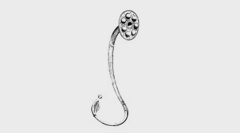Keywords
Nordic, Danish culture, Danish identity, multicultural optimism, Muslim
Abstract
Denmark used to be a fairly homogenous country where stereotypes of homogenous Nordic-ness could be happily and easily applied. Immigrants, often seasonal farmworkers, were invariably white. A young woman named Stefania was one of the many Poles who came to Lolland-Falster in the years 1893–1929 to work in the sugar beet fields in order to send money back to her family. She was thirteen when she arrived, with fake papers. At that time, Danish farmers and squires often hired young Polish women to do the most difficult work in the fields—weeding and harvesting the sugar beets. At the time, this was widely considered to be women’s work. The girls lived on the farms or in special housing called “Polish barracks” (Polakkaserner). When the season ended in the fall, most of the workers went back home, but some Poles settled, married, and became an assimilated part of the local Danish society (“De Polske Roearbejdere”). In 1940, 4,885 persons born in Poland were registered as residents (”Polske roe-arbejdere på Falster”).
Recommended Citation
Schmidt, Nete
(2018)
"Integration Challenges and Langkær Gymnasium,"
The Bridge: Vol. 41:
No.
2, Article 7.
Available at:
https://scholarsarchive.byu.edu/thebridge/vol41/iss2/7
Included in
European History Commons, European Languages and Societies Commons, Regional Sociology Commons


